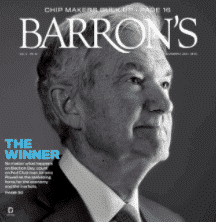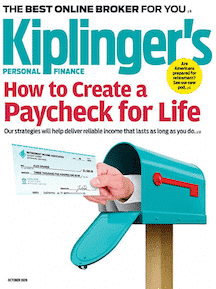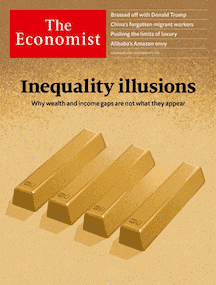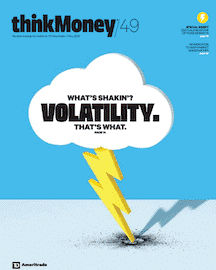Overall, the print industry is not doing particularly well and financial magazines may not have the circulation they once did in their prime.
There are many publishing companies that have gone out of business, or were bought out by other media companies, and some paused the print and just went straight to digital.
And although It’s true that the print industry is dwindling, there are quite a few financial magazine corporations that are still going strong. The reason for this?
These financial magazines still provide a range of stories that consumers are willing to pay for because of the brand history, deep insights and solid reporting, plus sometimes it’s good to read a physical publication.
But which financial publications should you consider reading or subscribing to this year?
Are Financial Magazines Still Worth Reading?
But first, are financial magazines still worth reading? Being a personal finance nerd, they definitely are to me! And if you are reading this post, you probably agree or are looking to learn beyond some personal finance books.
One downfall to digital articles are their consideration for ranking at the top of the search engine results. It means that, on occasion, the quality of the content can suffer as writers fluff out their articles with optimized keywords and sensational headlines.
On the contrary, physical copies of magazines don’t care about going viral or matching the exact search terms of their reader.
These writers have the freedom to dive deep into each topic and the magazine editors can cut out the fluff. You’ll often find that the focus of physical magazine articles will differ from those online for this very reason.
When reading physical magazines, you’re also not subject to a bombarding of flashy ads that often pop-up on financial news sites.
That’s not to say ads are absent from magazines, but they’re often placed to carefully consider your full, uninterrupted reading pleasure.
Plus, there’s just something about the tangible copy of a magazine that brings many readers a sense of relaxation and calm. Where your day might already be filled with digital overload, taking a break to flick through the pages of a magazine can be considered a slight luxury.
The Top Financial Magazines to Read
All of these can be read online too, since the print industry has shifted. More often than not, you’ll find that these sites offer a mix of free and gated content.
This means that where the top stories might be free, particular articles may require a log in to your account or have a subscription. Some also offer package subscriptions where you get the print and also access to all online articles.
There is no particular order to these!

1. Barron‘s
Barron’s is a sister publication to the very well-respected Wall Street Journal, and focuses on articles about market updates and U.S. financial information.
Publishing since 1921, Barron’s offers thorough analysis underpinned by key facts rather than sensational opinion pieces.
One of the unique features of Barron’s magazine is their periodic follow-up to regular stock picks. Even if they recommend a stock that doesn’t do as well as expected, their writers will follow up with further explanations and advice.
Compared to the Financial Times, this magazine offers more conservative views in some of its regular columns, so would suit readers who align with those views or are searching for more traditional business and economy updates.

2. Financial Times
The Financial Times is one of the most popular and universal information sources for investors and financial newbies alike.
Founded in 1888, some consider the Financial Times the ‘holy grail’ financial magazine, as its longevity and worldwide circulation has proved.
While the broadsheet covers international news and provides a platform for opinion pieces by relevant industry experts, the Financial Times really excels in the areas of economic commentary and financial data analysis.
The Financial Times is read by many high-net worth and aspiring individuals, holding onto many “most credible” accolades. Articles in this magazine tend to use financial jargon that a beginner might not find easily digestible.

3. Kiplinger
This financial magazine focuses more on personal finance topics rather than stocks and investing.
Think of Kiplinger as your own financial planning older brother. The magazine provides practical financial advice for readers who are ready to take tangible steps, just take this recent article: “15 Money Moves To Make To Prepare For 2021”.
The Kiplinger Retirement Report is an annual feature which answers the concerns of affluent older Americans.
It typically covers topics such as: taxes, estate planning and long-term social security and healthcare. Kiplinger might therefore be well-suited towards readers in their 50s or 60s who are approaching or settling into retirement.

4. The Economist
Instead of placing itself solidly in the “economical box” (as the name would suggest), The Economist publishes weekly editions covering current affairs, politics, technology and international business.
Each of the writers for this magazine remain anonymous, which ensures the overall tone of the magazine is consistent.
Another rare feature of this magazine when compared to others on the list, is their open publishing of critical responses to their articles in an effort to promote a number of views and standpoints on each topic.
The Economist openly states that their target audience consists of a “truly progressive global audience” who take keen interest in international events and the impact of technology. Not so typical for a financial magazine!
They also place an emphasis on their digital readership, providing detailed figures around social media followings and email subscriptions. This magazine is therefore more likely to be suited to liberally-minded readers who have a good working knowledge of economics.

5. Investor’s Business Daily
Investors Business Daily was originally created in 1984 by a founder who was frustrated with the lack of freely available information on the stock market and despite the name, it now publishes physical copies once per week.
Not only is it heavily focused towards the most up-to-date research on the stock market, but this magazine provides commentary and editorial features on economic affairs.
Investors Business Daily aligns with many other US mainstream outlets in its typically conservative views. The magazine provides information for serious investors, as junior venture capitalists may struggle to understand and digest its contents.

6. thinkMoney® Magazine
thinkMoney® Magazine boasts a “fun take” on typically serious financial topics such as options and futures.
The quarterly financial magazine pushes out content for active traders, highlighting various trading strategies and market insights.
Owned by electronic brokerage platform TD Ameritrade, the company made an average of $2.1 million revenue per day through trading; so thinkMoney magazine is a value-add service to provide further insight for current customers.

7. Wall Street Journal
This financial magazine is one of the most popular circulating in the US and published 6 days per week in order to provide the most recent print information on the stock market.
The Wall Street Journal’s writers cover economic events as well as international news, politics, business and technology.
In an effort to appeal to younger readers, the magazine giant also publishes both videos and podcasts regularly as readers diversify. This means that the Wall Street Journal is one of the most accessible magazines for all audiences.
Littered with opinion pieces, it might be the best bet for those looking to swat up on the economy and increase their knowledge in all areas.

8. Forbes
Alongside its iconic shoutout in the Travie McCoy/Bruno Mars song: Billionaire, Forbes Magazine serves over 140 million readers per month across its various platforms.
With the physical magazine published just 8 times per year, this magazine is best-known for its celebrity rich lists and rankings.
In fact, where its competitors have seen a decline in readership, Forbes grew by 50% from 2009 to 2016, largely due to its cult-following among millennials.
Instead of deep-diving into economic analysis and market trends, Forbes magazine focuses on original social commentary pieces to engage a more liberally-minded audience.
Its articles are easily digestible for the typical educated American and gives a platform for influential figures in society to publish their views.

9. Fast Company
Similar to Forbes, Fast Company publishes economically-focused ranking and list articles 8 times per year.
Focusing on the key developments happening among the top companies, this magazine reveals the actions and innovation behind the stock market numbers.
Priding itself on being a “progressive media outlet”, the award-winning magazine largely appeals to millennial culture by transcending traditional financial subjects and discussing the wider socio-economic impact of current affairs.
Therefore, it’s ideal for those looking to widen their business knowledge and get to know the influential people behind the brands.

10. Fortune
Fortune’s readership consists of more high net-worth c-suite individuals than most of their competitors, and values business and tech prior to finances.
But that doesn’t make the giant irrelevant in the financial space, with Fortune’s annual 500 List an infamous part of business culture.
Providing a platform for thought-leadership articles, Fortune upgraded the quality of their physical magazines in March 2020 to include more stories per issue, original cover art and better paper.
This magazine is well-suited to CEOs and any business person with a focus on innovation.

11. Inc.
With a print audience of over 1.4 million, Inc magazine showcases inspiring entrepreneurs, start-up successes, the newest technology, and of course, financial business articles.
Founded in New York in 1979, the magazine has always had access to some of the world’s top entrepreneurs, as shown by the Inc 500 and Inc 5000.
This magazine is well-suited to career-passionate individuals who believe it’s more than just a job, and visionary leaders who like to take risks and adopt new strategies before they have scientific backing.
The magazine gives a platform to these individuals, and showcases new tech alongside its business articles in order to provide for those forward-thinking readers.
